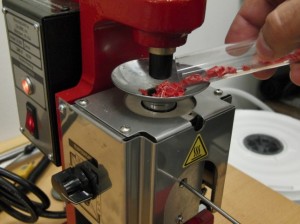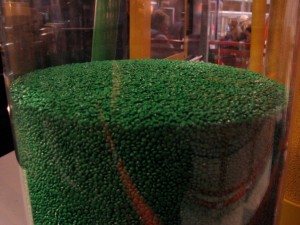
Plastic Injection Molding
What Is Plastic Injection Molding?
 If you’re new to the production industry, you may not be familiar with some industry terms such as injection molding services. So, what is injection molding? By its simplest definition, plastic injection molding is a process for creating plastic parts using injection molds on an injection machine. This process is typically used for large-scale part production, which means that injection molding is normally outsourced to a plastic injection molding company. Injection molding and extrusion account for more than half of the volume of plastic products manufactured on a yearly basis.
If you’re new to the production industry, you may not be familiar with some industry terms such as injection molding services. So, what is injection molding? By its simplest definition, plastic injection molding is a process for creating plastic parts using injection molds on an injection machine. This process is typically used for large-scale part production, which means that injection molding is normally outsourced to a plastic injection molding company. Injection molding and extrusion account for more than half of the volume of plastic products manufactured on a yearly basis.
What Might Require Injection Molding?
As the world has discovered over the past century, virtually anything can be made with plastic. The science that goes into determining the exact polymer formula has been refined to a science, with 10,000 different kinds of materials used in injection molding. These materials can be mixed together to form even more combinations to create the perfect product. Along with materials, product size can vary quite a bit from being a centimeter in diameter to four feet by four feet. A variety of different plastic parts can be made, like the following:
- Machinery or car parts
- Tools
- Containers
- Décor
- Toys
What Happens Before Injection Molding Manufacturing?
The process for working with injection molded plastics can be lengthy, depending on the product you want to make. If the product has already been designed, the pre-production process will not take as long. However, if you plan on having an engineer design the product, it’s important to account for design time when you plan on working with an injection molding company.
- Designing the product. You need to have a 3-dimensional design of the product before a prototype can be made. Typically an engineer will make a model using CAD software, making measurements and determining what particular material they will be using for the product.
- Creating a prototype. Once the design is complete, the engineer will create a prototype that has all the correct dimensions and measurements so that the mold can be created properly. The prototype is usually constructed using a 3-D printer, a process that has grown more and more sophisticated over time. Depending on what the product is, the prototype may be tested after it is made.
- Getting the machine ready. Tooling the machine is possibly the most tedious and the most time-consuming part of the project. This is because precision is incredibly important for accurately producing the product en masse. Being off even by a millimeter could completely destroy the product or part’s functionality.
How Does the Plastic Injection Molding Process Work?
Although injection molding is a relatively quick way to mass produce something, it can still take a lead time of about 24 weeks. Much of that time is taken up by the pre-production process, but even then, the actual manufacturing of the product can take some time as well. The plastic injection molds process is relatively simple and typically follows these steps:
- Feeding injection molding plastic material into the hopper from a heated barrel. The material is preheated to make it soft, but not melted. The hopper holds a large amount of plastic and must be kept filled so that the process can perform properly.
- Material is pushed into a heated chamber by the plunger, where it melts. The plunger is shaped like a screw and rotates downward, pressing the melted plastic through the chamber.
- Melted plastic is pushed further through a nozzle, forcing it into the mold cavity. The mold cavity is the section that has been tooled toward the specific settings for that particular product or part.
- The plastic solidifies as the mold is filled and kept at a set temperature. The temperature in the mold is slightly cooler than the heating chamber, which allows the plastic to solidify. When the product is removed, it is cooled off further so that it sets.
Why Choose Plastics Injection Molding?
There’s a reason why the global injection molding market is expected to reach $252 billion in 2018. In fact, there are several reasons:
- Relatively Inexpensive Materials – Plastic is definitely one of the cheaper materials out there, and it’s synthetic, so it’s easy to produce in large quantities.
- Low Production Costs – For the amount of product you can manufacture with an injection mold company, the cost of production is much lower than you might expect.
- Time-Efficient – Most plastic injection molding companies have a fairly time-efficient operation schedule, and that can affect other aspects of a project. The quicker a product is produced, the more money your company will save.
Choosing from all of the different plastic injection molding companies can be difficult, but it’s best to look for a company that will give you the best value. Streamline Plastics can help manufacture your product at a competitive value, while making high quality products.
Streamline Plastics Will Provide You with High-Quality Plastic Injection Molding
Unlike many other plastic mold injection companies, Streamline Plastics is a family-run business that places an emphasis on customer satisfaction. Our plastic injection molding facility is set up to run whenever you need it to. Although Streamline Plastics is one of many injection molding companies, we have an open-door policy for any range of project and products.
Call Streamline today and get a free quote.


